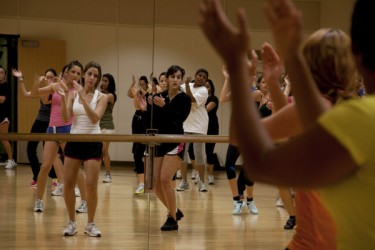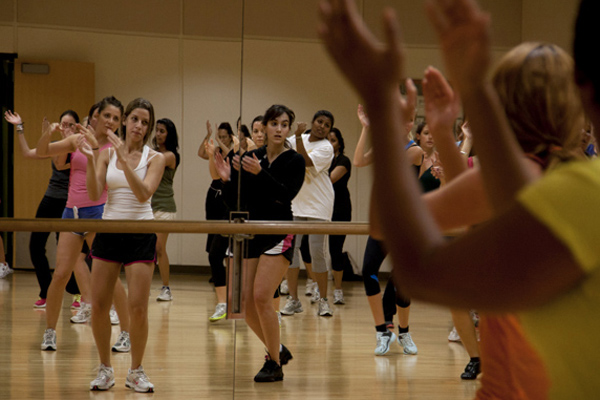
Getting in shape is just a dance step away.
Zumba is a trending workout routine that involves choreographed dance steps to international music.
Its main goal is to help burn fat. Depending on various physical factors, such as sex and body weight, this can mean an average 400 to 600 calories per hour in class.
The routine increases cardiorespiratory fitness, muscular toning and overall flexibility.
“It is a fun way of exercising because you get to do something you love to do like dancing, but you’re working out at the same time,” said junior Tara Reaves, who attends the classes.
A typical zumba class begins with a selection of Latin genres like salsa or merengue. The styles then begin to switch as the instructor may use a more modern track to shift to wall push-ups or squats.
“I love the high energy of the instructors and the class as a whole,” said freshman Laurel Zaima, who tries to attend a couple of times a week. “The loud music and fun dance moves really make you break a sweat.”
Zumba has become one of the most popular classes at the Wellness Center. In order to be attend the class, participants arrive anywhere from one to two hours in advance in order to receive a number that guarantees them a spot. The classes take place in Multipurpose Room B, which can hold at most 55 people.
“We always have to turn people away and the numbers run out way before the class starts,” said Sandra Diaz, a senior student employee at the Wellness Center.
People have been known to sneak in to the class even after it has reached maximum capacity and dance in the hallways next to the classrooms. The fitness program managers (FPM) remain in the class for the first ten minutes to ensure that people don’t sneak in but many will after the FPMs leave.
“Students, faculty, and staff love their zumba and not just Hispanics but people from multiple backgrounds and even guys,” Diaz said.
Instructor and Assistant Director for Group Exercise and Instructional Programs, Melisa Jurado does, however, recommend that zumba novices should gradually learn the moves.
“Watch the feet, and learn the foot movements first,” Jurado said. “Then you can do the hips and the arms.”
Because zumba uses dance moves and not complicated exercise terms, first-timers can quickly learn the ropes. Zumba instructors are certified to teach using body language and vivid motions.
“It’s a fun way to get in my cardio and I don’t really feel like I’m working out,” freshman Katie O’Brien said.
The full schedule of classes can be found at miami.edu/sa/index.php/wellness_center.






